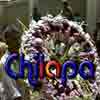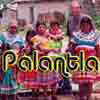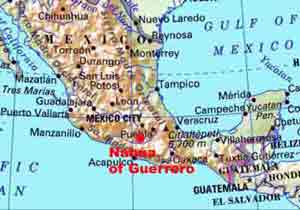 |
 |
 |
 |
| Some personal comments about Chilapa- My first contact with Chilapa was in the 1970's when Chilapa was a major palm weaving center, exporting palm bags and other crafts in large numbers. Today there is little left of that industry; it has been replaced by a resurgent palm hat business. There is also a growing Mescal whisky business. The town was famous for years for rebozo weavers, I filmed one of the last in 1994, today there remain little of the former rebozo industry.
On this page, the focus is on the villages of the Chilapa region. With regard to language, Nahua is the most widely spoken indigenous language in Mexico, in conversations with the people shown in this section they understand and can communicate with the peoples of the Mountain region. The Mountain region centered near and around the towns Tlapa and Chilapa is the most densely populated of the Nahua regions. These regions are in contact with other indigenous groups, the Mixtec, Tlapaneco and Amusgo. Guerrero is one on the poorest state in Mexico and the indigenous population as usual in Mexico is at the very bottom of the economic ladder. Electrification and portable water are recent developments in the region. Road building got a push in the 1970's when dirt roads where cut to many villages and now paving is just now getting under way. The Rio Balsas ( Balsas River is one of the largest river systems in Mexico ( 450 miles) and large government projects have dammed the river along its long trajectory. The Nahua population of Guerrero is about 350000 based on the 1990 census the actual population in the Rio Balsas area approximately 50000. The villages of the Rio Balsas region have a extensive handicrafts, the painting on amate paper, mask making, pottery and decorative wood working are known all over Mexico. The Nahua of Guerrero migrated to the area in pre-Hispanic times because of problems in the areas of Morelos and Mexico's central valley. Codices from the period suggest that the migration originated from Xochimilco, Toluca and the southeastern areas of the Mexican central plateau. These migrations were followed my military excursion and conquest. The Nahua of today are located in five basic areas, the mountain, central Sierra, Upper Balsas River, Northern Sierra and Tierra Caliente (hot lands). The Nahua indigenous neighbors include the Tlapanecos and Mixtecos in the mountain region |
|||||
|
|||||







